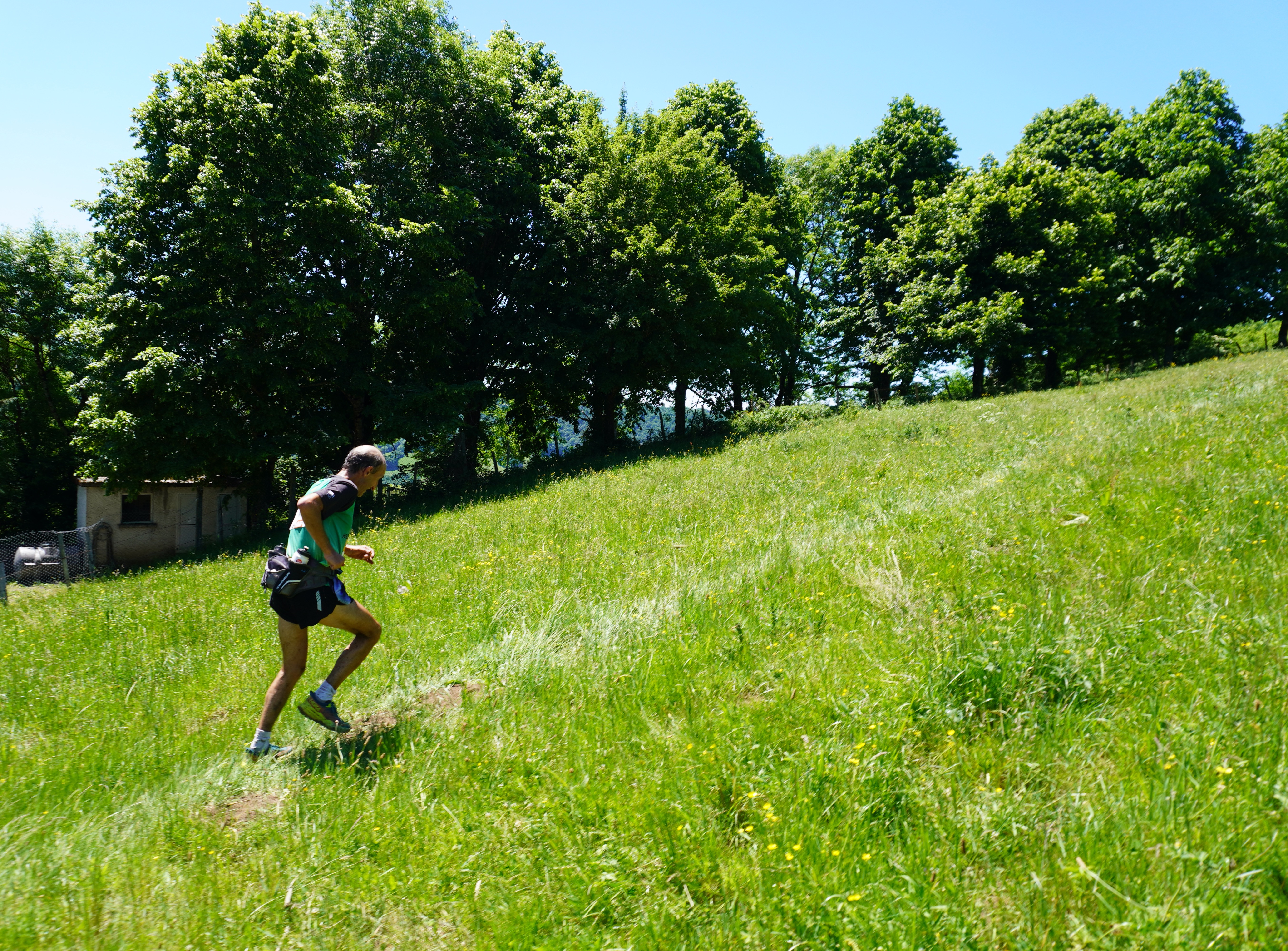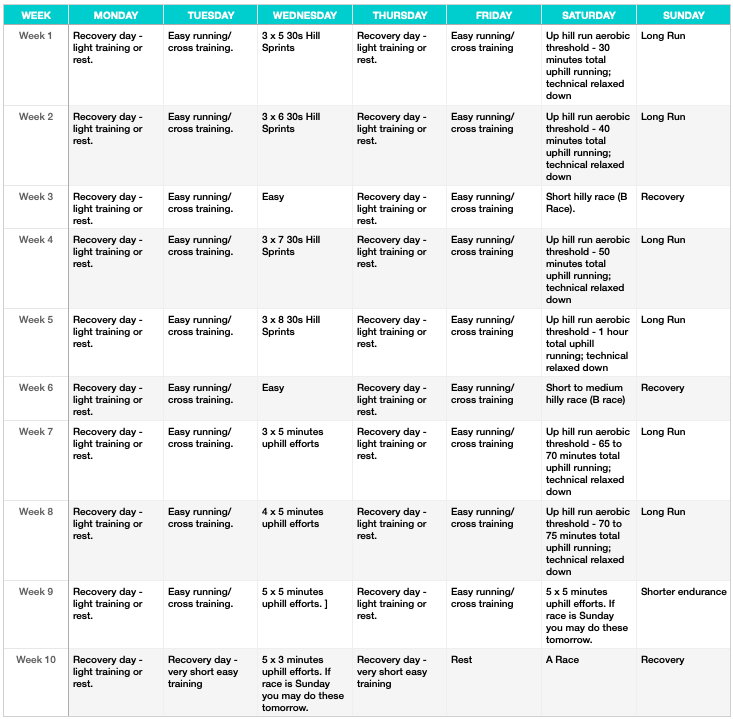Ten tips to Run Faster Uphill

I am lucky enough to have always been able to climb pretty effectively, perhaps because I love being at the top of mountains. However, I know (and have been told on more than one occasion) that liking climbing is ‘a bit weird.’ The majority of people I run with (but not all) struggle with hills both psychologically and physically finding it difficult to keep a pace or keep running. Now there is no doubt that we cannot run up all parts of a mountain, but thinking about it there are certain things that I do in running and training which help me keep going and get to the top. I thought I’d share a few of these things with you to help you conquer those hills.
1. Love the Hill
If you tell yourself you can’t you won’t. If you struggle with hills, perhaps the first thing to do is to conquer some of those negative thoughts about hill climbs. If you want to do trail running, there are going to be hills. As I like running up hill I generally think and feel positive about uphill sections of any course. Here are some of the things I think when I am climbing or see the climb ahead which keep me positive:
- I am good at hills.
- I can keep going if I slow my pace a little.
- Getting to the top will be worth it.
- I can gain places on the hill as others stop or walk.
- Bit by bit I will get there.
2. Practise Running Uphill
You will only get better at something if you practise it, so practise running up hills, choose hilly training routes, or incorporate a tempo hill climb into your weekly training routine. Thinking about it I have always done hill work even when most of my racing has been on the road. I have always lived in hilly places (I grew up in West Yorkshire in the UK for a start). Hill repetitions have always formed part of my training, partly because it’s a good way to gain overall running strength without the same fatigue of a track session and partly because even when I was running on the road the courses I was doing were hilly.
If you are doing a race with some difficult climbing in it practise those climbs in training. If you can’t get to the course look at the course profile and map, even pictures, then find a hill you can get to that best matches the climb(s) in the race and practise on those. I used to enjoy running Bradford Parkrun in Manningham Park because it was a three lap course with a hill in it fondly called the ‘teeny tiny hill’ followed by a flat section. This was perfect for training as it meant I got to practise running up a hill in race conditions and ‘running off the top’ (i.e. keeping the effort once I had crested the hill and changing my cadence and style to match).
3. Lean in to the hill
A good way to keep momentum when running up hill is to lean into it; not from the hips but through your whole body. Why? If you lean from the waist only you will effectively be in a sitting position, placing the weight behind you and pulling you back down the hill. This is something I just seem to do automatically but thinking about it it helps by redistributing your body weight in the direction you want to go so you are working with gravity more rather than against it, it also puts you in a better position to drive your knees up and push off with your toes.
4. Look ahead
When we lean forward it can be tempting to hunch over; this closes your chest and even your neck if you are really hunched preventing good breathing technique. So look ahead at the ground a few metres in front of you to see where the best line is going to be. This will help keep your chest open and allow you to breath more easily; you will be breathing hard!
5. Get on your Toes
Getting on your toes will automatically help you lean in to the hill as described above, it also keeps you light and ensures that your calf and hamstring muscles are not overstretched for pushing off; your muscles work like a spring, can you imagine trying to work a spring when it is over stretched? Getting on your toes puts some tension in the spring enabling it to spring back with force and power.
6. Shorten your stride
Taking shorter strides is more efficient, rather than asking your muscles to work harder with each step you are asking for a greater number of smaller efforts. Longer strides stretch the muscle again so again it loses some of its springiness and power. People with longer strides may initially seem to be going faster, but on a long climb you are likely to overtake them with a more efficient uphill running style. If I’m doing a shorter climb and going well I like to think of it as ‘chopping’ into the hillside. The steeper the climb the shorter the stride. For shorter less steep climbs you can drive your arms for added power.
7. Build Strength
Going up hills does require strength, in particular strong quads and glutes can greatly help. You can build strength by doing short hill repetitions of about 30s (see plan below) or by getting to the gym and doing some squats, step-ups and dead lifts. If the gym is not your thing, single leg squats on their own are very effective, focus on keeping your knee in a straight line building up to a fully seated position.
Another good way to build hill strength is to do some cycling; this will strengthen your quads and glutes and is a perfect cross training activity for lighter training days. Mountain biking in particular is a good way to build explosive strength needed for steeper, rocky climbs.
8. Know when to walk

Clearly not all climbs are runnable and it’s a good idea if you know you are going to be racing on some rough stuff to practise the best lines to scramble up. In the photo I am reccying the Holme Moss Fell Race route with a friend who knows the race well and was showing me the best lines up.
Sometimes, it just gets too steep even though it’s not particularly rough and at that point walking is the only option. The principle is similar however, lean in to match the gradient, keep on your toes, but instead of driving your arms use them to push your legs by placing your hands mid thigh and pushing down as you push off with your foot.
9. Pace yourself
Without wishing to sound too obvious, some hills are bigger than others. Whilst you may be able to run up a short 70% gradient of about 1.5km, you may struggle to keep up that pace for 17km! So set your pace according to the climb.
In addition in long races, whilst the hill may be runnable it may not be a good use of energy. The Three Peaks of Yorkshire is a good example of this, I have run Pen-y-Ghent and Ingleborough and even most of the steep race ascent up the face of Whernside individually, but to do this in the 24 mile race is simply not good pacing for me. Far better to keep out of the red zone and walk some of the steeper sections so that you are able to have the energy for some strong descending in a longer race.
10. Get into a Good Rhythm
I find getting into a good rhythm on any climb really helps, just as it does when you are running on the flat. Find the perfect stride length and keep the footfall light and regular. Counting can help, or using a tune/song that fits your rhythm that you can repeat in your head (or out loud if you dare and have the breath). Whilst I don’t enjoy running with headphones I have been known to get up hills singing ‘Five Little Speckled Frogs Sat on a Speckled Log’!
Uphill Training

Uphill efforts are good for overall fitness, but particularly good if you are planning to run a trail race with a decent amount of climb in it. This is an 8 week hill training programme with some suggested up hill workouts; it includes sessions that I have used to stay strong on climbs. Doing these sessions has also helped me maintain confidence, because when I see a hill, I know that I have tackled similar (or worse!) in training. You will notice that on Sundays I advocate walking to keep the intensity low; this is good practice, even if you think you can run the hill for the pacing mentioned earlier in this article.
September 11, 2019

Comments